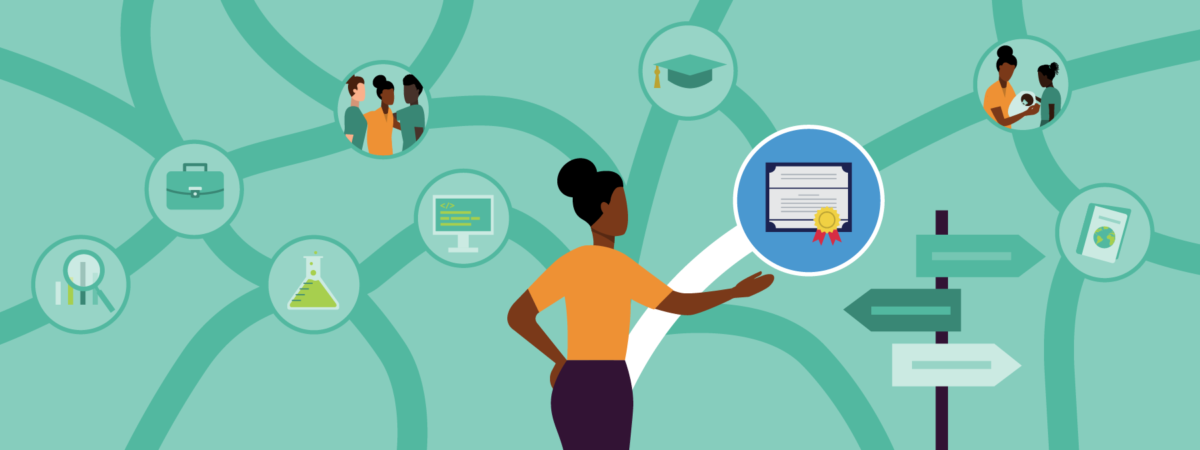
Learning is a process we participate in every day. As we learn, we grow and develop; these changes are called learning transitions and they are continuous in nature. Yet, how they impact a learner and the resources available to them can mean the difference between thriving or surviving along a learning or career pathway.
Colley (2007) defines a learning transition through two central elements: the dimension of change (often overemphasized) and the dimension of time (often neglected). Continuous in nature, we are always transitioning in some way. Sometimes, the changes we experience can greatly impact us emotionally, socially, and economically. It can also change the direction of our learning and career path, and the choices and opportunities available to us along the way.
Some examples of learning transitions include transitioning from one major life stage, such as adolescence to adulthood, or between different life roles such as getting married or becoming a parent, or even moving homes or countries. It can also refer to transitioning from one career or focus of learning to another, such as from art to mathematics. How we might describe the change and its impact on us depends on the individual experiencing it.
Learning transitions are a critical part of our learning and personal life. Some learning scientists even attest that we are most active in our learning when we are experiencing transition.
With intense or impactful transitions, individuals often require support to manage the high degree of change impacting their work, study, or life. It is also at these times when individuals may require access to their learning and employment information to display evidence of their skills, credentials, and experiences.
Emerging learning and employment innovations such as verifiable credentials (VCs), Learning and Employment Record (LER) technology, and digital wallets, portfolios, and resumes increase in value at the points of transition such as when individuals enroll in a new school, apply for a job, show credentials to support an immigration application, or rent an apartment.
For learning and employment innovations to truly benefit and support individuals during learning transitions, we must adopt a more equity-centered and inclusive view of learning transitions and the technologies designed to support them.
An equity-centered and inclusive approach is often absent in much of the work on learning transitions, be it in education or workplace studies.
Instead, much work is focused on an institutional, traditional view of transition along a somewhat linear pathway — “from home to nursery or preschool, from preschool to early childhood and middle school, from primary to secondary school, from the broader curriculum suitable for ages 11–14 to subject choices ages 15–16, from secondary to further and/or higher education, from education to work, into adult education and from one occupation to another in career changes” (Colley, 2007).
This excludes and takes for granted:
The purpose of the LER Learning Transition Design Principles work at Digital Promise is to address these exclusions. Our work considers learning transitions as lived experiences—a natural flow (Colley, 2007), a permanent state—and as centered in the point of view of the learner experiencing them. We also evolve from the traditional view of transitions and pathways, to instead co-design inclusively with learners who have been historically and systematically excluded.
More specifically, using our approach for Inclusive Innovation, we will engage learners who are female-identifying, Black, Latino, Indigneous, and/or LGBTQIA+ to develop a series of design principles for the development of LER technology. These principles will guide developers, vendors, and pilot partners in how to best develop LER technology to support individuals during experiences of learning transitions.
This work will in turn inform the development of a Product Certification for LER Technology on Learning Transitions (anticipated in 2023).
To learn more about the LER Learning Transitions work and the portfolio of LER projects that Digital Promise is engaged in, please complete this form or email us, and a member of our Learning and Employment Innovations team will be in contact.
Colley, H. (2007). Understanding time in learning transitions through the lifecourse. International Studies in Sociology of Education, 17(4), 427-443.